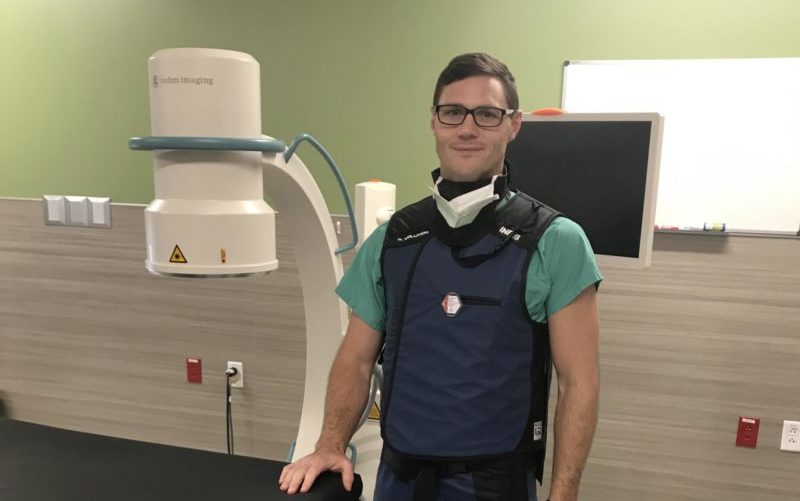Call Us: 615-791-2630

Neck and back pain can be debilitating for people of all ages. And while even severely painful issues, such as herniated discs, can resolve with time, patients often need relief sooner. “It can take a year or more for an injury to heal on its own,” explains Zachary Kalb, D.O., a physiatrist (physical medicine and rehabilitation specialist) who specializes in interventional spine medicine at the Bone and Joint Institute of Tennessee. “In today’s world, it’s impossible to take that amount of time off work. Most can’t afford a year’s time to heal – especially if facing debilitating pain. Non-operative procedures can accelerate the healing process and provide people with relief during the healing period so they can get back to their daily activities. Our goal is to keep a patient’s pain at a tolerable level throughout the healing process. This can often help patients avoid surgery,” says Dr. Kalb. As a physiatrist, Dr. Kalb treats every joint, ligament, tendon, and nerve in the body from head to toe. His primary focus is treating back pain spanning anywhere from the neck to the tailbone, often originating in the discs, spinal nerve roots, and facet joints.
IMAGE-GUIDED INJECTIONS FOR BACK PAIN
The two most common injections Dr. Kalb performs are epidural and facet injections. During an epidural injection, Dr. Kalb often injects both steroid and local anesthetic to coat the spinal nerve root and back of the disc, both common pain generators. During a facet injection, similar medications are administered to the weight-bearing joints of the spine. These injections decrease pre-existing inflammation, prevent future inflammation, and in doing so decrease and eliminate pain.
RADIOFREQUENCY ABLATION (RFA)
Facet joint pain is perceived by the patient via small medial branch nerves. To treat this pain, Dr. Kalb performs a radiofrequency ablation (RFA), an outpatient procedure that takes roughly 30 minutes to perform, by introducing a small needle along the medial branch nerves and applying heat to the nerves. This heat denatures the nerve and cuts off communication between the painful facet joint and brain. This renders the medial branch nerve incapable of transmitting a pain signal, providing long-term numbing of the facet joints and eliminating pain. Following the procedure, the patient can go home on the same day with little to no restrictions. Successful RFA treatment can provide six months to more than a year of pain relief. The body can eventually repair the nerve, so when this occurs, pain signals can once again be transmitted; however, this usually takes at least six months to occur. “In my experience, pain returns with less severity and often takes much longer than six months to return,” says Dr. Kalb. ![]()
![]()
A COLLABORATIVE APPROACH FOR BETTER OUTCOMES
Patients at the Bone and Joint Institute of Tennessee often benefit from the physicians’ collaborative approach to treating spinal pain. There are times where surgery is necessary and non-surgical treatments are not the best choice. “If I feel it is necessary to discuss surgical options before proceeding with my non-surgical treatments, without delay, I can speak directly with one of our spine surgeons – Dr. McNamara, Dr. Klekamp, or Dr. Davidson – and if needed, I am often able to get the patient seen by one of our spine surgeons that same day. This saves the patient critical time and the hassle of scheduling an additional appointment. “Patients don’t need to go home and come back again later.” This is one of the rare benefits of being treated at the Bone and Joint Institute that separates us from other orthopaedic providers. Apart from saving the patient time and expediting care, the ability to have a patient’s case reviewed from a surgical and non-surgical perspective simultaneously is invaluable with regard to the quality of care. “I am fortunate to be able to walk down the hall, stand shoulder to shoulder with some of the best spine surgeons in the country, and review a patient’s case in real-time. It’s invaluable for the patient to have their case reviewed by multiple physicians at once and a treatment course be planned collaboratively,” says Dr. Kalb. One other noteworthy benefit of being treated at the Bone and Joint Institute of Tennessee is the ability to change treatment plans in real-time. Patient symptoms are constantly evolving and may improve, worsen, or change altogether from one patient visit to the next. “Not uncommonly, a collaborative treatment plan is formed which involves me performing a non-surgical procedure,” says Dr. Kalb. “However, when the patient presents for said procedure, days after the plan is formed, their symptoms may have changed. At this point the planned procedure may not be the best choice of treatment or the procedure may need to be performed at a different location of the spine. In other clinics, this may require the patient to either go forth with a preplanned treatment that may not be the best option or abort the current treatment plan and spend days waiting for an additional visit to discuss a new treatment plan. At the Bone and Joint Institute, I can speak with the spine surgeon and other orthopaedic specialists the same day a patient presents for their procedure. If needed, an alternative course of treatment can be planned and executed that same day.”
![]()
SPECIAL COVID-19 PRECAUTIONS
The Bone and Joint Institute of Tennessee remains fully open while taking special precautions during the COVID-19 pandemic, including patient and employee screening and frequent cleaning. Learn more on their COVID-19 FAQ page or by watching the following video.
NON-SURGICAL SOLUTIONS FOR BACK PAIN ARE AVAILABLE NOW
For more information about non-surgical spine treatments, call Bone and Joint Institute of Tennessee at (615) 791-2630. You can also schedule an appointment online.
